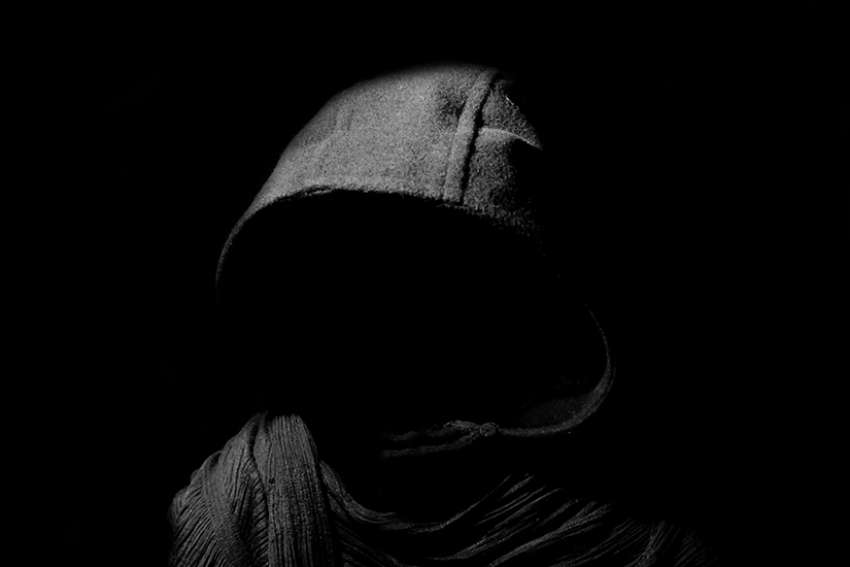Our picture of evil has been falsely shaped by images taken from mythology, religious cults and from books and movies that portray evil as personified in sinister spiritual forces. Demons haunt houses, appear at séances, are summoned up by Ouija boards, contort bodies and are exorcized by the sprinkling of holy water.
Whatever evil does reside inside this concept of demonic forces (and you can believe in them or not) is infinitely eclipsed by the ordinary face of evil which looks out at us from newscasts, is daily manifest in ordinary life and is manifest too in our own face on a given day.
Mostly we are blind to the evil that foments inside us, tears communities apart and eats away at God and goodness. The Gospels can help us understand this.
In the Gospels, the evil one has two names because evil works in two ways. Sometimes the Gospels call the evil force “the devil” and other times they call it “Satan.” What’s the difference? In the end they both refer to the same force (or person) but the different names refer to the different ways in which evil works. Devil, in Greek, means to slander and to tear things apart. Ironically, Satan means almost the exact opposite. It means to unite things, but in a sick and malevolent way.
So evil works in two ways: the devilish works by dividing us from each other, tearing us apart and having us habitually slander each other so that community is forever being torn apart through jealousy and accusation. The satanic, on the other hand, does the opposite, with the same result. The satanic unites us in a sick way, that is, through the grip of mob-hysteria, social hype, self-serving ideologies, racism, sexism, envy, hatred and in a myriad of other malevolent ways so as to draw us into mob-hatred, gang-rapes, lynchings and crucifixions. It was satanic forces that engineered Jesus’ crucifixion.
When we look at our world today, from politics to social media to what’s happening inside many of our religious circles, we would have to be blind not to see the powers of the “devil” and of “Satan” at work (however you personally define and picture these).
Where do we see the devilish at work? Basically everywhere. Today, most everywhere, you see persons sowing division, attributing false motives to others, calling for them to be distrusted and ostracized. Indeed, this is almost the dominant element we see in our politics and in our social media.
The result is the breakdown of community, the stalemate in our politics, the breakdown of civility, the loss of trust in the meaning of truth, the smug belief that our own idiosyncratic narrative functions as truth and the near universal neglect of elemental charity. Today we are witnessing a dangerous breakdown of trust and civility, coupled with a massive erosion of simple honesty. The devil must be smiling.
Where do we see the satanic at work? Everywhere as well. More and more we are retreating into tribes, gangs, with those who think like us and have the same self-interests to protect.
While this can be a good thing, it’s not good when we unite in ways that are rooted in self-serving ideologies, economic privilege, racism, sexism, false nationalism, envy and hatred. When this happens, our group ceases being a community and becomes instead a mob, a sick one, which at the end of the day, whatever its particular idiosyncratic slogan, ends up chanting, as did the crowds on Good Friday, “Crucify Him! Crucify Him!”
It’s significant that in the Gospels almost every time the word “crowd” is used it’s used pejoratively. Commentators tell us that almost without exception every time the word “crowd” appears in the Gospels it could be preceded by the adjective “mindless.” Crowds are mindless; worse still, they generally have a sick bent towards crucifixion. The renowned Czech novelist Milan Kundera highlights this when he shares his strong fear of “the great march,” the sick fever that so generally infects a crowd and, soon enough, has them chanting, “Release to us Barabbas! And as for Jesus, crucify Him!” This is the face of Satan in ordinary life, the actual face of evil.
We need to name this today as we see the ever-intensifying and bitter polarization inside our families, communities, neighbourhoods, cities and countries. Factionalism, anger, bitterness, distrust, accusation and hatred are intensifying most everywhere, even inside our own families where we are finding it harder and harder to sit down together, be civil with each other and talk through our political, social and moral differences. Sadly, even the deadly presence of a pandemic which threatens all of us has worked to divide rather than unite us.
Evil doesn’t ordinarily have the face and feel of the devil in Rosemary’s Baby ; it has the face and feel of this evening’s newscast.
(Fr. Rolheiser can be reached at ronrolheiser.com)


